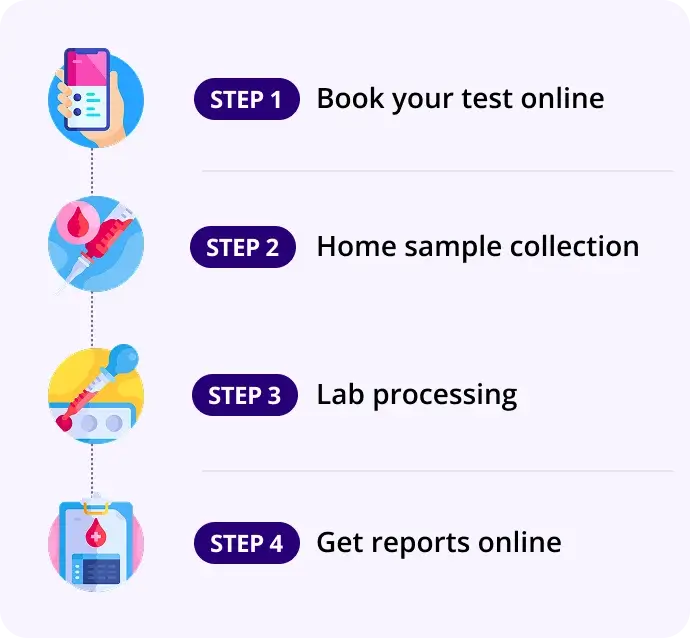Anti Mullerian Hormone (AMH)
Report in 16Hrs
At Home
No Fasting Required
Details
Anti-Müllerian Hormone (AMH) is a hormone secreted by granulosa cells of ovarian follicles. It reflects the ovarian reserve, or the remaining egg supply in a woman’s ovaries
₹950₹2145
56% OFF
Test Overview
Anti-Müllerian Hormone (AMH) Test
| Parameter | Details |
|---|---|
| Full Name | Anti-Müllerian Hormone (AMH) |
| Sample Type | Blood (Serum) |
| Fasting Required | ❌ No |
| Best Time to Test | Any day of the menstrual cycle (preferably day 2–5 for consistency) |
| Method | CLIA (Chemiluminescence Immunoassay) or ELISA |
What Is AMH?
Anti-Müllerian Hormone (AMH) is a hormone secreted by granulosa cells of ovarian follicles. It reflects the ovarian reserve, or the remaining egg supply in a woman’s ovaries. In men, AMH is produced by Sertoli cells of the testes but is not typically used in routine testing.
OrgansInvolved
| Organ | Role |
|---|---|
| Ovaries | Source of AMH; indicates the number of small developing follicles (eggs) |
| Pituitary/Ovarian Axis | AMH works alongside FSH, LH, and estrogen in reproductive regulation |
WhyIs This Test Done?
| Clinical Use | Purpose |
|---|---|
| Assess ovarian reserve | Helps determine how many viable eggs remain |
| Evaluate fertility potential | Useful in women planning pregnancy or IVF |
| Guide ovarian stimulation in IVF | AMH is often elevated in PCOS women |
| Monitor early menopause or ovarian aging | Lower AMH may signal reduced fertility potential |
| In pediatric endocrinology | Used to assess gonadal function, ambiguous genitalia, or intersex conditions |
Interpretation Guide (Women)
| AMH Level | Interpretation |
|---|---|
| > 4.0 ng/mL | High ovarian reserve (may indicate PCOS) |
| 1.0 – 3.5 ng/mL | Normal ovarian reserve |
| 0.5 – 1.0 ng/mL | Low-normal; reduced egg supply |
| < 0.5 ng/mL | Severely diminished ovarian reserve |
Interpretation may vary slightly based on lab reference range, age, and context.
In Men & Children (Less Common Use)
Low AMH in boys: May indicate testicular dysfunction or gonadal dysgenesis
ElevatedAMH Seen in persistent Müllerian duct syndrome (PMDS)
Recommended Additional Tests (Fertility/PCOS Context)
| Test | Why |
|---|---|
| FSH, LH, Estradiol | Evaluate overall ovarian/pituitary axis |
| Antral Follicle Count (AFC) | Via ultrasound; cross-verifies ovarian reserve |
| TSH, Prolactin | Rule out thyroid/pituitary involvement |
| Testosterone, DHEAS | Rule out androgen excess (e.g., in PCOS) |
| Insulin Resistance Markers | Often altered in PCOS |
Key Notes
AMH does NOT vary during the menstrual cycle → test can be done any day.
AMH does not predict egg quality, only quantity.
It is a better marker than FSH for early detection of declining fertility.
Lifestyle factors, chemo/radiation, and aging reduce AMH levels over time.
Summary Table
| Test | Anti-Müllerian Hormone (AMH) |
|---|---|
| Primary Use | Assess ovarian reserve / fertility potential |
| Fasting Required | ❌ No |
| Best Tested In | Reproductive-age women; fertility evaluation |
| Positive Finding (High) | May suggest PCOS or good ovarian reserve |
| Negative Finding (Low | Suggests diminished ovarian reserve or menopause |
How our test process works!

